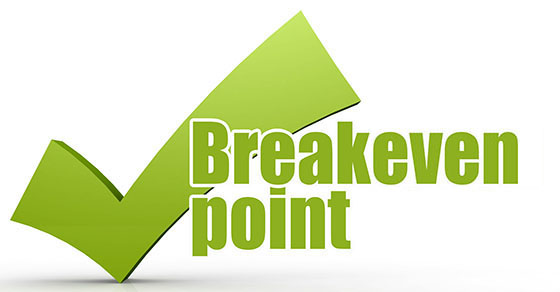
Breakeven analysis can be useful when investing in new equipment, launching a new product or analyzing the effects of a cost reduction plan. During the COVID-19 pandemic, however, many struggling companies are using it to evaluate how much longer they can afford to keep their doors open.
Fixed vs. variable costs
Breakeven can be explained in a few different ways using information from your company’s income statement. It’s the point at which total sales are equal to total expenses. More specifically, it’s where net income is equal to zero and sales are equal to variable costs plus fixed costs.
To calculate your breakeven point, you need to understand a few terms:
Fixed expenses. These are the expenses that remain relatively unchanged with changes in your business volume. Examples include rent, property taxes, salaries and insurance.
Variable/semi-fixed expenses. Your sales volume determines the ebb and flow of these expenses. If you had no sales revenue, you’d have no variable expenses and your semifixed expenses would be lower. Examples are shipping costs, materials, supplies and independent contractor fees.
Breakeven formula
The basic formula for calculating the breakeven point is:
Breakeven = fixed expenses / [1 – (variable expenses / sales)]
Breakeven can be computed on various levels. For example, you can estimate it for your company overall or by product line or division, as long as you have requisite sales and cost data broken down.
To illustrate how this formula works, let’s suppose ABC Company generates $24 million in revenue, has fixed costs of $2 million and variable costs of $21.6 million. Here’s how those numbers fit into the breakeven formula:
Annual breakeven = $2 million / [1 – ($21.6 million / $24 million)] = $20 million
Monthly breakeven = $20 million / 12 = $1,666,667
As long as expenses stay within budget, the breakeven point will be reliable. In the example, variable expenses must remain at 90% of revenue and fixed expenses must stay at $2 million. If either of these variables changes, the breakeven point will change.
Lowering your breakeven
During the COVID-19 pandemic, distressed companies may have taken measures to reduce their breakeven points. One solution is to convert as many fixed costs into variable costs as possible. Another solution involves cost cutting measures, such as carrying less inventory and furloughing workers. You also might consider refinancing debt to take advantage of today’s low interest rates and renegotiating key contracts with lessors, insurance providers and suppliers. Contact us to help you work through the calculations and find a balance between variable and fixed costs that suits your company’s current needs.
© 2021

